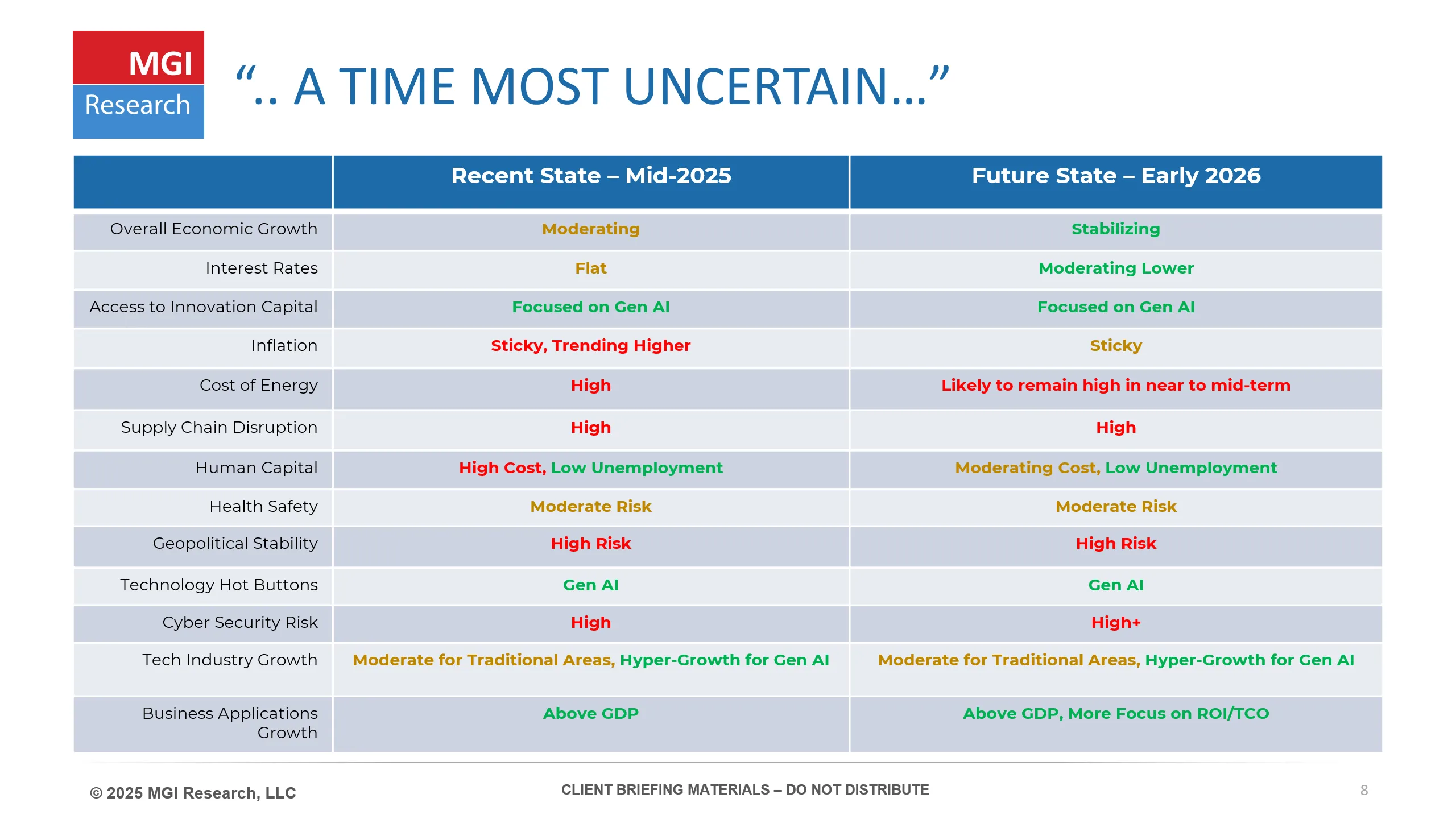Welcome to The Margin, a newsletter designed to keep you on the leading edge of monetization.
In business, the difference between being ahead of the curve or slow to adapt is anything but marginal. The Margin aims to be the most useful, timely, and incisive ping that hits your inbox all week. It includes critical research and analyst insights to inform short and long-term decision making.
Here’s what you need to know:
Research Spotlight | Cloud CPQ market will grow 16% by 2026
We recently published a Total Addressable Market (TAM) Forecast for Configure-Price-Quote (CPQ). We expect spend on CPQ tools (including public, private, cloud-based, and on-premises spend) to exceed $45 billion from 2022-2026, growing at a Compound Annual Growth Rate (CAGR) of 11%.
- The cloud-based CPQ market, meanwhile, is projected to grow faster, at 16%.
- Get the CPQ TAM Forecast here to learn more.
A Story You Can’t Afford to Miss | Canary in a Consolidation Coal Mine?
On January 11, payments platform giant Stripe quietly acquired early-stage consumption billing startup Octane. Is this the beginning of widespread consolidation of venture-backed startups or a one-off acqui-hire?
Tune Into MGI | ROI/TCO Models and the Business Case Imperative
Our next webinar will take place this Thursday, Jan 25 at 8am PT / 11am ET.
ROI (Return on Investment) and TCO (Total Cost of Ownership) models help buyers set internal expectations for business outcomes associated with investment in a new business application, and they help vendors articulate the business case for their offerings.
- Having a complete business case assessment is becoming the norm, not the exception, for all new software spend.
- Register now to find out how to build ROI and TCO models, best practices for buyers building business cases, and the unexpected pitfalls associated with ROI and TCO models.
Now let’s dive a bit deeper.
Research Spotlight
Cloud CPQ Market Will Grow 16% by 2026
How big is the market for Configure-Price-Quote (CPQ)?
MGI’s latest TAM Forecast predicts the size and growth trajectory of CPQ spend from 2022-2026 and breaks down the market by company size, geographic region, sectors and industries, public vs. private spend, cloud-based vs. on-premises spend, and the impact from major industry trends.
Global CPQ spend is expected to grow from $7.4 billion in 2022 to $11.2 billion in 2026. That number includes public, private, cloud-based, and on-prem spend. The five-year TAM for CPQ automation tools is projected to exceed $45 billion, growing at a CAGR of 11%.
The cloud-based CPQ market is growing faster, at 16%. The TAM for cloud CPQ tools is expected to reach approximately $34 billion over the same five-year period.
The bulk of spending will come from large companies (those with more than $1 billion in yearly revenues) based in the United States and Japan. Top-spending industries include:
- Industrials
- Automobile Manufacturing
- Technology Hardware
- Construction and Engineering
Services CPQ (both standalone firms as well as services organizations within product companies) are predicted to grow by nearly 17% from 2022-2026, a slightly faster growth rate than the overall cloud-based market.
In contrast with cloud CPQ tools, the legacy, on-prem CPQ market is declining at a rate of -1.8%.
Zoom out | The forecast indicates that large, global enterprises are shifting away from spreadsheets, homegrown solutions, and legacy systems and investing in off-the-shelf CPQ tools in hopes of improving efficiency.
The takeaway | While younger, more agile companies have long seen CPQ as a table stakes requirement, demand is now increasingly being generated by larger, slow-growth organizations. In fact, two-thirds of global spend on cloud-based CPQ tools will come from companies with slow, flat, or declining revenue growth.
Get the CPQ TAM Forecast here to see the spend breakdown by year, company size, region, sector, impact from major industry trends, and more.
A Story You Can't Afford to Miss
Canary in a Consolidation Coal Mine?
On January 11, 2024, early-stage usage billing startup Octane announced its union with Stripe.
Octane had previously raised two rounds of capital and was bringing a consumption billing solution to the market. Stripe is aiming to improve its ability to handle moderate to sophisticated billing scenarios. Given Stripe’s payments-oriented approach to billing, it’s unclear how, if at all, the Octane team will materially increase Stripe’s billing functionality. As the messaging of its sale to Stripe indicates, Octane’s traction with paying customers was limited.
After half a decade of exuberant venture funding and record-breaking valuations, startups with “logo velocity” but low ARR, high-cost structures, and limited product maturity are in search of acquisition partners. Many startups received funding without any diligence being conducted. Inclusion in hot startup lists does not require any assessment of vendor viability. Buyers should be wary of industry talk – most rumors are inaccurate. Financial due diligence cannot be ignored.
In MGI’s Agile Billing Top 50 buyer’s guide, Octane was included as an honorable mention supplier, but did not earn a full MGI 360 Rating™, in part due to its inability to provide reference accounts using the product.
- Read Octane’s honorable mention write-up on page 77 of the buyer’s guide.
- Stripe Billing received an MGI 360 Rating of 53 and a neutral analyst outlook.
Between the lines | Stripe’s acqui-hire of Octane is a very early indicator of what is likely to be a broader industry trend later in 2024.
- Financial due diligence is as important as ever.
- Most industry reports contain little, if any, assessment of business viability.
Early insights | A surprising number of startups have a longer cash runway than industry talk would indicate.
- Barring new sales traction, those companies will nonetheless struggle to get attractive financing when they run out of cash in 2024 or 2025.
- We expect a culling of the venture-backed herd in the next 12-24 months (probability =0.7).
Tune in to MGI
ROI/TCO Models and the Business Case Imperative
Join us this Thursday, Jan 25 at 8am PT / 11am ET for a live webinar exploring ROI, TCO, and what else is needed to produce a credible business case for technology investments.
Given today’s unpredictable macroeconomic environment, it’s no surprise companies are tightly controlling expenditures of all sizes. Building a robust business case – including detailed financial analysis – is becoming the standard for organizations adopting new software solutions.
Creating an ROI (Return on Investment) or TCO (Total Cost of Ownership) analysis is usually the first step in building executive support for a new investment. However, most business cases and financial models are incomplete at best. Well-disciplined organizations prepare an analysis of the following:
- Overall solution and vendor fit for the buyer
- Expected business outcomes/benefits
- Projected costs
- Risks with this type of project and unique risks facing the buyer.
All too often, organizations focus solely on the ROI or TCO model and fail to document the potential risks or overall (not just financial) business benefits associated with a given choice. By assessing the business value and associated risks of a project, organizations create a roadmap for guiding the long-term success of adopting a new system.
Assigning expected value (and risk) to new capabilities that come with a new software application forces key stakeholders to come together and document the costs and benefits of making significant business process changes. The output of this is an artifact that can later be referred to when a project or system faces key decisions. Answers to key questions like “what is the cost/benefit of bringing historical data forward?” can be answered, and unexpected costs can be weighed impartially against expected outcomes. When user organizations have a rigorous business case in hand at the time of initiating a product evaluation cycle, it signals to vendors a real commitment to project success and an expectation that investment must align with results. And building the business case needn’t take long. Undertaking a thorough business case should take weeks, not months.
Why you should care | Building a robust business case – including detailed financial analysis – is becoming the standard for organizations adopting new software solutions.
- Technology buyers should expect serious vendors to provide an ROI or TCO analysis tool as part of their sales materials.
- Vendors without a credible business value analysis should be given a “yellow card” – penalized in the evaluation process but not necessarily removed from consideration.
The bottom line | MGI is experienced in helping technology buyers (and vendors) build realistic and defensible business cases that encompass the four critical points of fit, benefit, cost, and risk. Our upcoming webinar will explore best practices for ROI and TCO models, how to build a complete business assessment for new tech spending, how credible financial modeling can ensure software acquisition and implementation success, and more.
What do you think? | Let us know how you view the impact of a solid ROI/TCO model. The responses to this 1-question poll will be included in the next issue of The Margin.
Register for the free webinar here to learn more about ROI, TCO, and the business case imperative.
So What Have I Missed?
The Topical 20 | Our most recent and relevant research that will help you keep your finger on the pulse of AMP disciplines.
1. Going Global With E-Commerce
2. Tech Trends: Mapping the Software Industry
3. Configure-Price-Quote (CPQ) TAM Forecast 2022–2026
4. The Future of CLM Is Data-1st
5. Declouding: Will Curiosity Inspire Action?
7. Q2C Success: What Does It Take To Achieve Excellence?
8. 2024 Tech Budgets Preview — Webinar
9. Here Comes Usage! Adopting & Optimizing Consumption Business Models — Webinar
10. The Agile Billing Top 50 Webinar
11. The Agile Billing Top 50: A Buyer’s Guide
12. MGI Forecasts: Service-as-a-Business (SaaB) Software Global TAM Forecast 2022–2026
14. Survival of the Fittest: Managing Extreme Economic Uncertainty
15. The Global Tech Market Is Bigger Than You Think
16. Is Software Still Eating the World?
17. Not a Typical Recession: Making Sense of the Global Economy
18. Use Case Note™: Opencell in Agile Billing
19. 360 Rating™: Icertis in CLM
20. The 13 Deadly Sins of Agile Monetization
and 32 other Use Case Notes!
The Evergreen Archives | Curated past research that is still pertinent today.
1. Quote-to-Cash Is Dead; Long Live Prospect-to-Disclosure
2. What Every CEO Needs to Know About Subscription Business
3. Evolution of MoR into Monetization as a Service
4. Mediation 2.0: Taking on the Data Challenge in Agile Billing
6. Headless eCommerce Architecture: Is eCommerce Losing Its Head?
That’s it for this issue of The Margin. If you’ve made it this far, we’ll certainly see you next time.
Warm wishes, MGI Research





